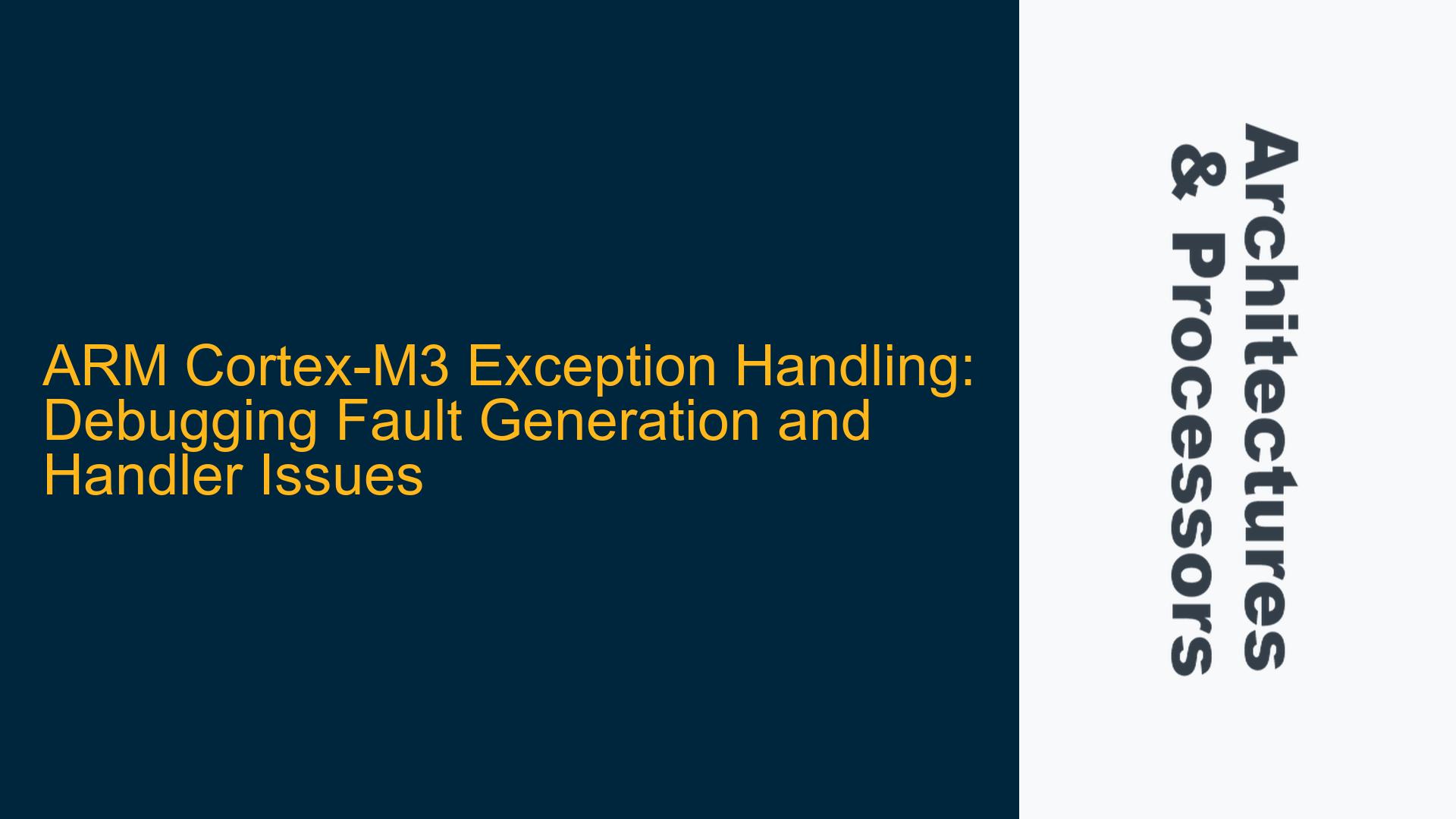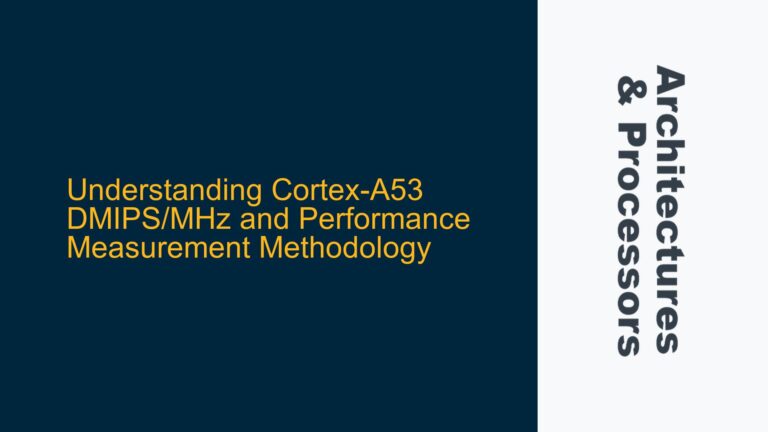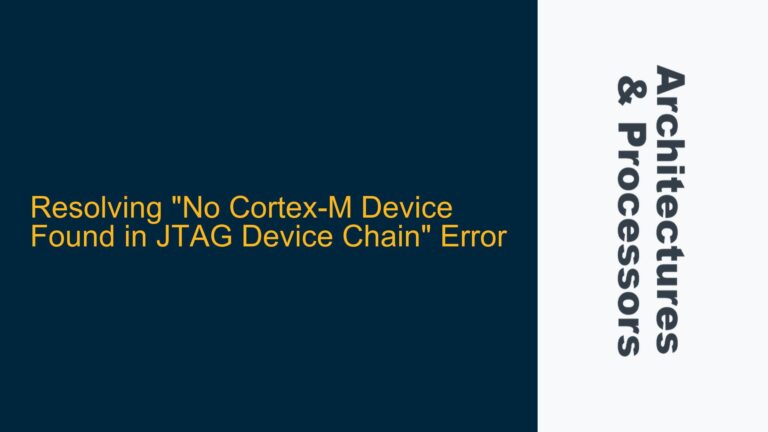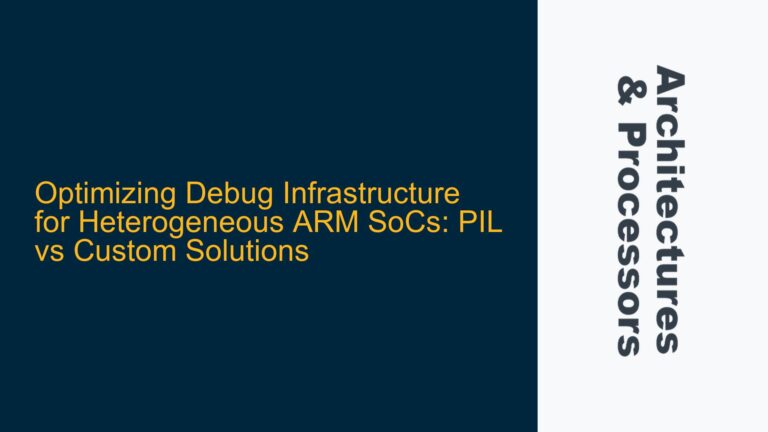ARM Cortex-M3 Fault Exception Configuration and Handler Invocation Problems
The ARM Cortex-M3 processor is designed to handle exceptions and faults efficiently, but improper configuration or misunderstanding of the fault handling mechanisms can lead to unexpected behavior. One common issue is the failure to trigger fault exceptions such as Bus Fault, Usage Fault, or Memory Management Fault, even when the conditions for these faults are met. This problem often stems from incorrect configuration of the System Control Block (SCB) registers, improper prioritization of fault handlers, or misunderstandings about how the Cortex-M3 handles specific fault conditions like division by zero.
In the provided scenario, the user attempts to generate exceptions by enabling fault handlers and configuring the SCB registers. However, the system fails to trigger the expected fault handlers, such as the UsageFault_Handler or BusFault_Handler, even when conditions like division by zero or invalid memory access are introduced. This indicates a potential misconfiguration in the fault handling setup or a misunderstanding of how the Cortex-M3 processes these faults.
The Cortex-M3 fault handling mechanism relies on several key registers in the SCB, including the System Handler Control and State Register (SHCSR), Configurable Fault Status Register (CFSR), and Configuration and Control Register (CCR). These registers control the enabling of fault handlers, the status of fault conditions, and the behavior of specific fault triggers like division by zero. Additionally, the Nested Vectored Interrupt Controller (NVIC) plays a critical role in prioritizing fault handlers and ensuring they are invoked correctly.
Misconfigured SCB Registers and Fault Handler Prioritization
One of the primary causes of fault handler invocation issues is the misconfiguration of the SCB registers. The SHCSR register is responsible for enabling specific fault handlers, such as the Memory Management Fault, Bus Fault, and Usage Fault handlers. In the provided code, the SHCSR is configured with the value 0x00070000, which enables these handlers. However, the exact bitfields must be verified to ensure they align with the intended fault handlers. For example, the SHCSR bitfields for enabling fault handlers are as follows:
- Bit 16: MEMFAULTENA (Memory Management Fault Enable)
- Bit 17: BUSFAULTENA (Bus Fault Enable)
- Bit 18: USGFAULTENA (Usage Fault Enable)
The value 0x00070000 correctly sets these bits, but if other bits are inadvertently modified, it could lead to unexpected behavior. Additionally, the CFSR register is used to clear fault status flags and configure fault behavior. Writing a value of 0x0367E7C3 to the CFSR clears all fault status flags, which is necessary to ensure that previous fault conditions do not interfere with new fault detection.
Another critical aspect is the configuration of the CCR register, specifically the DIV_0_TRP bit (Bit 4). Setting this bit to 1 enables trapping of division by zero errors, which is essential for triggering Usage Fault exceptions in integer division operations. However, the Cortex-M3 does not trap floating-point division by zero errors by default, as these are handled according to IEEE 754 floating-point standards, resulting in special values like infinity or NaN (Not a Number) rather than exceptions.
Fault handler prioritization is also crucial for ensuring that fault handlers are invoked correctly. The NVIC_SetPriority function is used to set the priority of fault handlers, with lower values indicating higher priority. In the provided code, the priorities of the Memory Management Fault, Bus Fault, and Usage Fault handlers are set to 0x01, which is appropriate for ensuring they are invoked when their respective faults occur. However, if other interrupts or exceptions have higher priority, they may preempt the fault handlers, leading to unexpected behavior.
Debugging Fault Handler Invocation and Implementing Corrective Measures
To resolve the issue of fault handlers not being invoked, a systematic approach to debugging and corrective measures is required. The following steps outline the process for identifying and fixing the problem:
-
Verify SCB Register Configuration: Ensure that the SHCSR, CFSR, and CCR registers are configured correctly. Use a debugger to inspect the values of these registers after the EnableExceptions function is called. Confirm that the MEMFAULTENA, BUSFAULTENA, and USGFAULTENA bits in the SHCSR are set to 1, and that the DIV_0_TRP bit in the CCR is also set to 1.
-
Check Fault Status Flags: Inspect the CFSR register to determine if fault status flags are being set when fault conditions occur. The CFSR provides detailed information about the cause of faults, such as division by zero, unaligned memory access, or invalid instruction execution. If the fault status flags are not being set, it indicates that the fault conditions are not being detected or reported correctly.
-
Test with Integer Division: Since floating-point division by zero does not trigger exceptions by default, test the fault handling mechanism using integer division. Introduce a division by zero operation in the code and verify that the UsageFault_Handler is invoked. If the handler is still not invoked, inspect the CCR and CFSR registers to ensure that the DIV_0_TRP bit is set and that the division by zero flag in the CFSR is being set.
-
Inspect NVIC Prioritization: Verify that the priorities of the fault handlers are set correctly and that no other interrupts or exceptions have higher priority. Use the NVIC_GetPriority function to inspect the priorities of the Memory Management Fault, Bus Fault, and Usage Fault handlers. Ensure that these handlers have higher priority than other interrupts that may preempt them.
-
Implement Infinite Loops in Handlers: To ensure that fault handlers are being invoked, add infinite loops or breakpoints within the UsageFault_Handler and BusFault_Handler functions. This will help confirm whether the handlers are being entered when fault conditions occur. If the handlers are not being entered, it indicates a deeper issue with the fault handling mechanism or the fault conditions themselves.
-
Review Compiler and Toolchain Settings: Ensure that the compiler and toolchain settings are configured correctly for Cortex-M3 fault handling. Some compilers may optimize out certain fault conditions or generate code that bypasses fault detection mechanisms. Disable optimizations or use specific compiler directives to ensure that fault conditions are preserved in the generated code.
-
Test with Known Fault Conditions: Introduce known fault conditions, such as accessing invalid memory addresses or executing undefined instructions, to verify that the BusFault_Handler and UsageFault_Handler are invoked. This will help confirm that the fault handling mechanism is functioning correctly for a range of fault conditions.
By following these steps, the issue of fault handlers not being invoked can be systematically identified and resolved. The key is to ensure that the SCB registers are configured correctly, fault status flags are being set, and fault handlers are prioritized appropriately. Additionally, testing with known fault conditions and verifying the behavior of the fault handling mechanism will help confirm that the system is functioning as expected.
In conclusion, the ARM Cortex-M3 provides a robust mechanism for handling exceptions and faults, but proper configuration and understanding of the fault handling process are essential for ensuring reliable operation. By carefully verifying the configuration of the SCB registers, inspecting fault status flags, and testing with known fault conditions, developers can ensure that fault handlers are invoked correctly and that the system responds appropriately to fault conditions.






